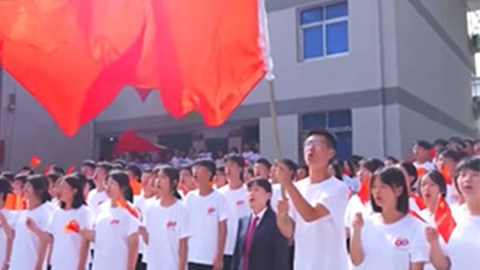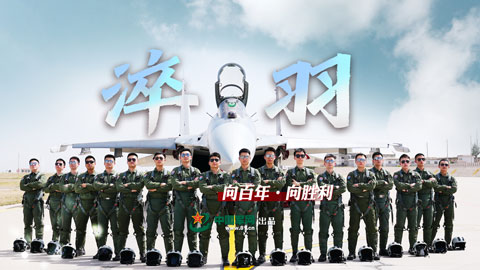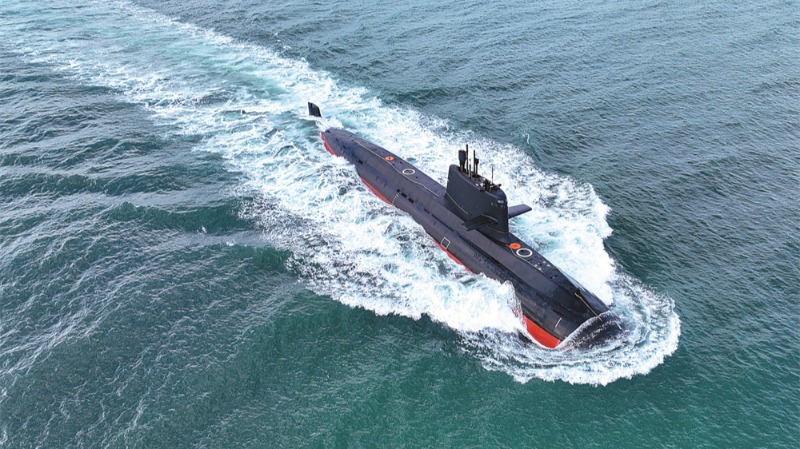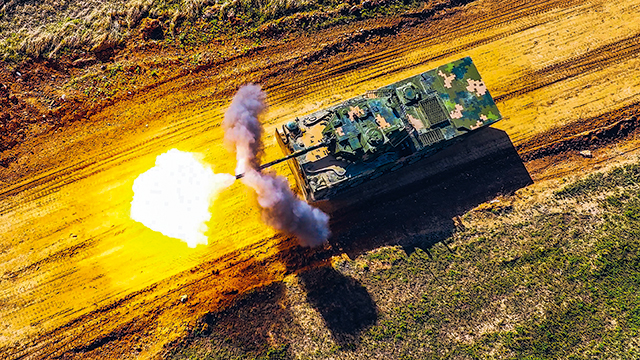By Ling Yunzhi
凌云志
Recently, the Japan Self-Defense Force (JSDF) took part for the first time as an official participant in joint military exercises under the AUKUS framework involving the US, the UK, and Australia. Japan's involvement in the AUKUS exercises is essentially aimed at breaking free from the constraints of the post-war framework, seizing the high ground in military technology, and ultimately advancing its strategic shift from an exclusively defense-oriented policy to that of a normal country. This development warrants strong vigilance of the international community.
近日,日本自卫队首次以正式成员身份参与美英澳“奥库斯”(AUKUS)框架下的联合军事演习。此次日本参与“奥库斯”联合军演,核心目标在于突破战后体制束缚、抢占军事科技制高点,最终实现从“专守防卫”向“正常国家”战略转型,值得国际社会高度警惕。
From Peripheral Alignment to Deep Binding
从“边缘靠拢”到“深度绑定”
Since the establishment of AUKUS in September 2021, Japan has steadily infiltrated the mechanism in the capacity of a quasi-member. In particular, it demonstrates keen interest, particularly in areas such as the proliferation of nuclear-powered submarine technology and the sharing of advanced defense technologies. In April 2024, Japan announced its participation in the AUKUS Pillar 2 activities, which include cooperation on hypersonic capabilities and anti-submarine warfare. Japan's recent participation in the AUKUS joint military exercise as a formal member for the first time marks a shift in its role from a mere observer to an active participant and signals the commencement of substantive cooperation between the two sides.
自“奥库斯”2021年9月成立以来,日本以“准成员”身份持续向该机制渗透,尤其在核动力潜艇技术扩散、先进防务科技共享等领域展现出强烈兴趣。2024年4月,日本宣布参与“奥库斯”的高超音速能力、反潜等“第二支柱”项目合作研发。此次日本首次以正式成员身份参与“奥库斯”联合军演,标志着其已完成了从“观察者”到“参与者”的身份跃升,双方关系也由此进入到实质性合作阶段。
During the exercise, the JSDF participated in the core task of testing acoustic communication technology between surface vessels and UUVs. As the most groundbreaking part of the entire exercise, the task signified Japan's deepening involvement in AUKUS's core military technology development framework.
在此次演习中,日本自卫队参加了船舶与无人潜航器间的声波通信技术测试这一核心任务,堪称整场演习最具突破性的环节,也标志着日本将深度介入“奥库斯”的核心军事技术研发体系。
It is worth noting that Japan also took advantage of the multinational Talisman Sabre exercise hosted by Australia to fully demonstrate its cross-domain cooperative combat abilities. By jointly deploying its F-35A stealth fighter jets alongside the Royal Australian Air Force's C-27J Spartan transport aircraft, Japan achieved seamless integration between airborne delivery and precision strike operations. This not only validated Japan's systematized approach to the employment of air power but also served as preparation for its future participation in high-end warfare under the AUKUS framework.
值得注意的是,日本还借势澳大利亚主办的“护身军刀”多国联演,展开跨域协同作战能力的全方位展示,通过将其F-35A隐身战机与澳军C-27J运输机联合部署,实现了空运投送与精确打击的无缝衔接。不仅验证了日本在空中力量运用上的体系化思维,也为其未来参与“奥库斯”框架下的高端战争做准备。
Attempt to Transition from Technological Collaboration to Political Breakthrough
日本企图从“技术合作”到“政治突围”
First, by participating in multilateral cooperation under the AUKUS framework, Japan gains entry into cutting-edge technological domains such as artificial intelligence, quantum communications, and UUV swarming. While these technologies are outwardly promoted as defensive applications, they in fact carry significant offensive potential. This strategy of riding the tide enables Japan to pursue its goal of loosening military restrictions and breaking through the constraints imposed by Japan's pacifist constitution without formally amending it.
首先,日本通过参加“奥库斯”框架下的多边合作,可以涉足人工智能、量子通信、无人潜航器集群等前沿技术领域。这些技术虽表面标榜为“防御性应用”,实则具备显著的进攻潜能。这种“借船出海”的策略,使日本能够在不修改宪法文本的前提下,实现谋求军事松绑、突破和平宪法限制的战略诉求。
Second, Japan views its participation in AUKUS as a critical pathway toward becoming a normal state. During the exercises, Japan deliberately emphasized a dual-track approach, which focuses on both targeted technological breakthroughs and participation in large-scale multinational exercises. It is aimed at demonstrating its comprehensive capability to align with AUKUS's strategic objectives, thereby laying the groundwork for building a secondary power center with Japan at the core. It also reflects Japan's staking its future on the realist logic that power determines status.
其次,日本将参与“奥库斯”作为实现“正常国家化”的重要途径。日本在演习中刻意强调“双线联动”模式——既专注专项技术突破,又参与大规模多国联演,正是为了证明自身具备承接“奥库斯”战略意图的综合能力,继而以此构建以己为中心的次级权力中心,也表明日本已将赌注押在“实力决定地位”的现实逻辑之上。
Regional Security Faces Potential Crises and Multiple Challenges
地区安全面临潜在危机与多重挑战
First, Japan's participation in the AUKUS exercises is highly likely to trigger a new round of arms race. The core component of Japan's involvement, the testing of acoustic communication technologies between surface vessels and UUVs, points directly to a revolutionary shift in future underwater warfare, which is expected to set off a chain reaction of regional military competition.
首先,日本此次参与“奥库斯”演习,极有可能引发新一轮军备竞赛。此次日本参与演习的核心科目——船舶与无人潜航器之间的声波通信技术测试,直接指向未来水下作战模式的革命性变革,势必会引发地区军备竞赛的连锁反应。
Second, Japan's engagement in AUKUS exercises brings with it an unprecedented risk of nuclear proliferation. The fact that Japan has gained access to data interfaces related to nuclear propulsion systems through the exercises exposes critical loopholes in existing technology control regimes. This form of technical brinkmanship not only undermines the non-proliferation regime established under the Treaty on the Non-Proliferation of Nuclear Weapons (NPT), setting a dangerous precedent for East Asian countries, but also, given Japan's status as the only country to have suffered nuclear attacks, risks reigniting historical trauma among its neighbors. Such nuclear-related moves may, in turn, intensify regional states' motivations to pursue nuclear capabilities, thereby pushing nuclear proliferation in the region toward a perilous tipping point.
其次,日本参与“奥库斯”演习将带来前所未有的核扩散风险。但日本通过演习获得核动力系统数据接口权限的事实,已揭开了技术管控的漏洞。这种“技术擦边球”行为一方面打破了《不扩散核武器条约》的防扩散机制,为东亚国家树立了危险先例;另一方面,日本作为唯一遭受过核打击的国家,其涉核举动会引发周边国家的历史创伤记忆,刺激后者获取核武器的意愿,从而将地区核扩散推向更为危险的临界点。
Finally, Japan's participation in AUKUS exercises threatens to inflict unprecedented damage on the already fragile foundation of regional security trust. By transforming technological cooperation under AUKUS into a de facto military alliance and converting ostensibly defensive drills into offensive rehearsals, Japan is prompting neighboring countries to re-evaluate their own security strategies. This could ultimately unravel existing multilateral security frameworks, force regional actors into zero-sum choices amid major-power rivalry, and push the Asia-Pacific security landscape toward a bloc confrontation reminiscent of a new Cold War.
最后,日本参与 “奥库斯”演习将使原本脆弱的地区安全互信基础遭受前所未有的冲击。日本通过“奥库斯”体系将技术合作异化为军事同盟,把防御性演习演变为进攻性预演,导致地区国家将重新审视自身安全战略。最终可能瓦解现有的多边安全框架,迫使各国在大国博弈中做出非此即彼的艰难选择,从而将亚太安全格局推向“新冷战”式的阵营对立。
Editor's Note: Originally published on thepaper.cn, this article is translated from Chinese into English and edited by the China Military Online. The information and opinions in this article do not necessarily reflect the views of eng.chinamil.com.cn.




















